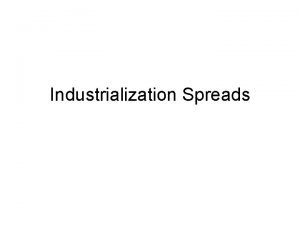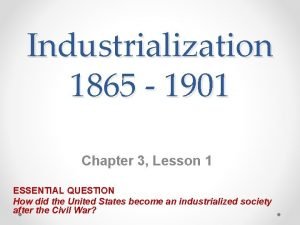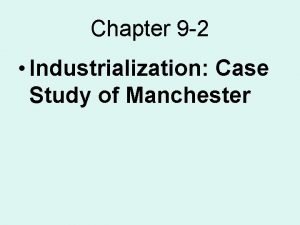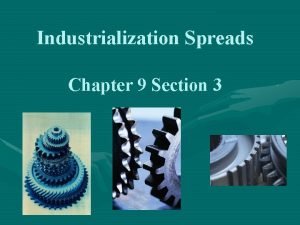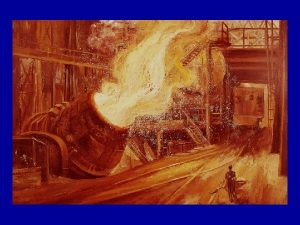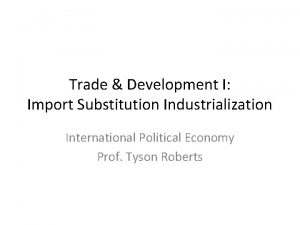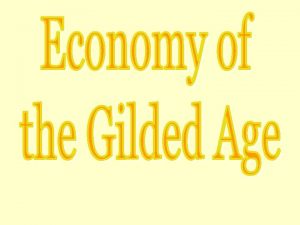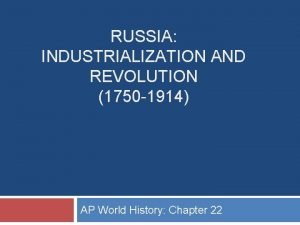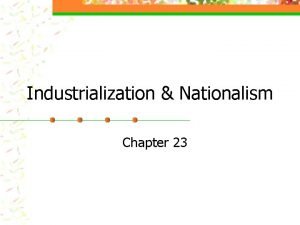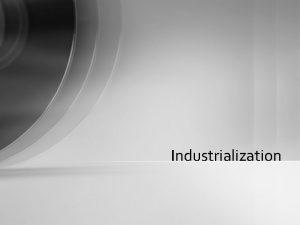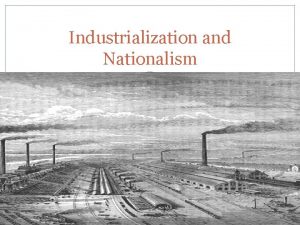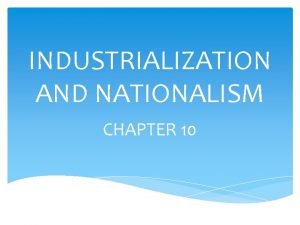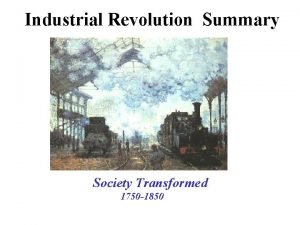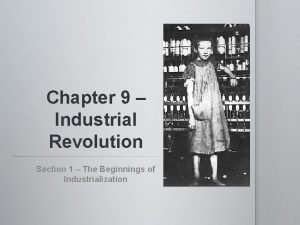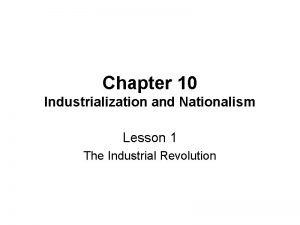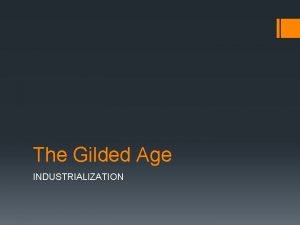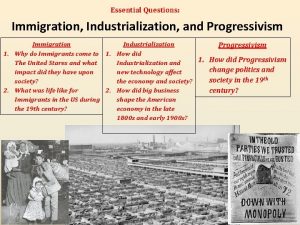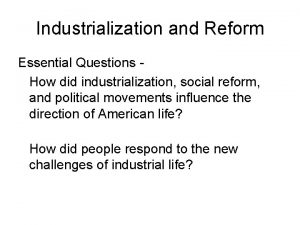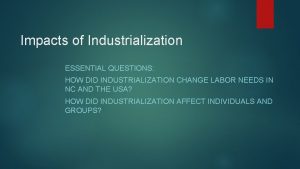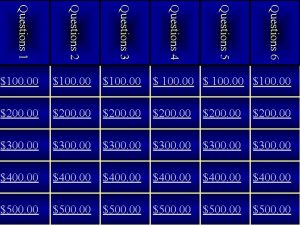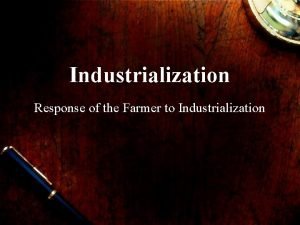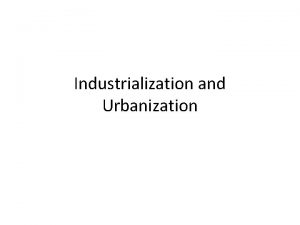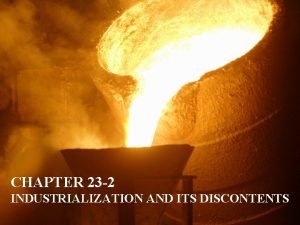Industrialization Development 1 Key Questions Q 1 Industrialization




















- Slides: 20

Industrialization & Development 1

Key Questions: • Q 1: Industrialization = Development? (Choice of strategies) – Association – Deviations from the Norm • Q 2: Industry = Which Sector? – (Choice of products) – Backward linkage & Forward linkage – Economies of scale • Q 3: Modern Technology = • (Choice of Techniques/Technologies) – Minimize the present value of costs – Employment effect 2

Q 1: Industrialization = Development? Figure 1: Association for Large Countries 3

Q 1: continued Figure 2: Association for Small Countries 4

Q 1: continued • Association (strong): – – B > 0; C < 0 • Variation (wide): – – – Size of economy Resource endowments Development strategies (policies): IS & EP Geographic location Historical circumstances 5

Industrialization as a Pathway: Historical Perspective • U. K. Industrialization lead to economic development – 1. But was this the entire story ? • No, Enclosures and Corn laws – 2. Industries which led: • Textile exports, steel etc. which caused backward and forward linkages. 6

Q 2: Industry = Leading Sector? Linkage & Products • Backward Integration (Example: Automobile->machinery->metal process->steel) – Given a rise in final or consumer goods – Demand feeds back to producer goods. • Forward Linkage (Example: Textiles->clothes) – Rise in producer goods – Supply stimulates final or consumer good demand • A necessary condition is that textiles must be produced below world cost • Policy to achieve above is an infant industry tariff 7

Q 2: continued Infant Industry – Korea used both the Infant Industry technique and then followed it by an outward looking export-oriented strategy. Korea was successful because it could enjoy at first the gains from import protection before switching to an export strategy because it was a political ally of the west. – Jamaica, which followed a similar strategy, failed because they did not get favored treatment by developed countries since it had a socialist government. 8

Q 2: continued Economics of scale • 1. What are economies of scale? – Scale economies are declining LAC curves. – Declining LAC arise due to – – a. fixed costs; research, b. spreading of capital, c. greater scale implies greater specialization d. quantity discounts • 2. What role do they play in an investment decision ? – Crucial to being competitive. 9

Q 2: continued LAC & Products 10

Q 2: continued MES & Products • Want to experience large scale economics quickly? Why? – Small Domestic markets? • Concepts: MES – MES= minimum efficient scale • % increase (or decrease) in ac curve@1/2 MES – Tells you how steep your cost increase is on short run Average cost curve • MES as % of market 11

Q 2: (continued) Why Not Beer? Products % rise in LAC MES as % of market Bread 15 1 Beer 9 3 Footwear 2 0. 2 Dyes 22 100 Sulfuric acid 1 30 polymers 5 33 Cement 9 10 Steel 8 80 Machine tools 5 100 Electric motors 15 60 Autos 6 50 Bicycles 1 10 Diesel engines 4 10 12

Q 2: Conclusion: Q 2: Conclusions Products Choice and Scale • Beer and Bread: No major scale economies and too quickly realized. Thus, all countries are efficient. Can’t compete by scale. • Steel and Machine tools, – Huge scale economies, – First there is efficient and tough for others to compete 13

Q 3: Modern = Good? Choice of Technique 14

Q 3: (continued) Capital-labor ratio • Capital-labor ratios – T 1: = 80/22=3. 6 (Labor intensive technology) – T 2: =200/11=18. 2 (Intermediate technology) – T 3: =400/5=80 (Capital intensive technology) • Thus, T 3 is 22 times more capital intensive than T 1 15

Q 3: (continued) Factor costs 16

Q 3: (continued) PV of Costs: Rich 17

Q 3: (continued) PV of Costs: Poor 18

Q 3: (continued) Employment effects • 1. Elasticity value = % industry employment / % industry value added =. 6 – or a 10% increase in Yp leads to a 6% growth in employment. • 2. This implies that productivity rose by 4 % per annum or – trade off between higher wages but less industrial employment 19

Q 3: Conclusion: Technical Choice and Scale • Favor Developed Countries • Capital Intensive have large scale economies and thus low capital costs keep developed countries continually out front when new techniques emerge for same products. 20
 Industrialization spreads chapter 9 section 3
Industrialization spreads chapter 9 section 3 Chapter 9 section 3 industrialization spreads answer key
Chapter 9 section 3 industrialization spreads answer key Industrialization (1865 to 1901 worksheet answers key)
Industrialization (1865 to 1901 worksheet answers key) Manchester2
Manchester2 Industrialization spreads chapter 25 section 3
Industrialization spreads chapter 25 section 3 Industrialization (1865 to 1901 worksheet answers key)
Industrialization (1865 to 1901 worksheet answers key) Contoh key partners
Contoh key partners Business model canvas tripadvisor
Business model canvas tripadvisor Import substitution industrialization
Import substitution industrialization Industrialization definition
Industrialization definition Industrialization definition ap world history
Industrialization definition ap world history Industrialization aphg definition
Industrialization aphg definition Chapter 23 industrialization and nationalism
Chapter 23 industrialization and nationalism Footloose industry example
Footloose industry example Guided reading activity industrialization and nationalism
Guided reading activity industrialization and nationalism -have strength to match the growth of industrialization
-have strength to match the growth of industrialization Result of industrialization
Result of industrialization Industrialization causes
Industrialization causes The beginnings of industrialization chapter 9 section 1
The beginnings of industrialization chapter 9 section 1 Industrialization and nationalism lesson 1
Industrialization and nationalism lesson 1 The beginnings of industrialization
The beginnings of industrialization

